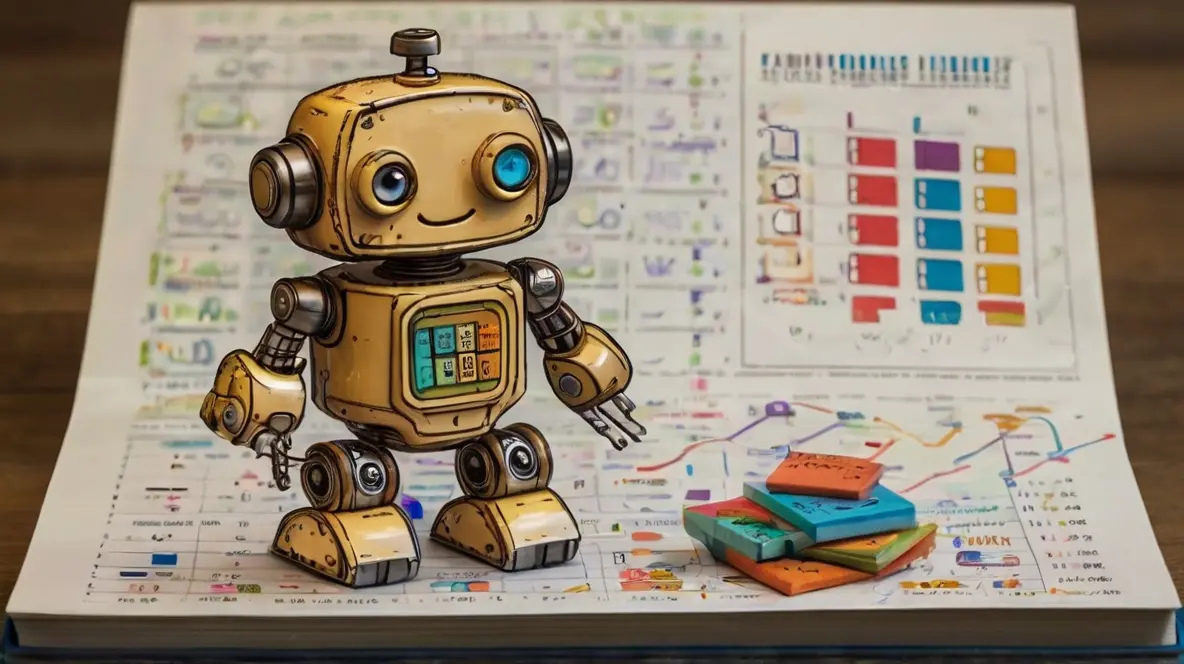
The math behind smart machines: A simple guide
Introduction
Ever wonder how your phone recognizes your face or how Netflix suggests movies you might like? These amazing feats are powered by machine learning, a type of artificial intelligence. But did you know that there’s a lot of math working behind the scenes? Don’t worry – you don’t need to be a math whiz to understand the basics. Let’s explore some key ideas in everyday terms.
Numbers are the building blocks
Just like houses are made of bricks, machine learning systems are built with numbers. These systems look at lots of data – think of all the cat photos on the internet – and turn them into long lists of numbers. For example:
- A black and white photo might be turned into a grid of numbers from 0 (black) to 255 (white)
- Your height might be represented as 170 (cm)
- Your favorite color could be coded as a set of three numbers for red, green, and blue
Key idea: Machine learning turns real-world information into numbers it can work with.
Finding patterns with averages and spreads

Imagine you’re trying to guess someone’s age based on their height. You might think about the average height for different age groups. Machine learning does something similar, but with way more information.
Two important ideas here are:
- Average (mean): The typical value in a group of numbers
- Standard deviation: How spread out the numbers are
For example, let’s say we have the heights of 100 people:
Measure Value Average height 170 cm
Standard deviation 10 cm
This tells us that most people are between 160 cm and 180 cm tall. Machine learning uses these ideas to spot patterns and make predictions.
Drawing lines to make decisions
Think about a scatterplot showing people’s height and weight. You could probably draw a line that roughly separates the adults from the children. Machine learning does this too, but with many more factors.
This idea is called linear regression. It’s like finding the best line to fit through a bunch of points. The computer tweaks the line over and over to make it fit better.
Fun fact: This “line-drawing” can work with more than two factors, creating invisible lines in many dimensions!
Probability: Betting on the most likely outcome
Machine learning often deals with uncertainty. It might say, “There’s an 80% chance this email is spam.” This is where probability comes in.
Probability is just a fancy way of talking about how likely something is to happen. If you flip a coin, there’s a 50% chance it’ll be heads. Machine learning uses more complex math, but the basic idea is the same – figuring out what’s most likely to happen.
Putting it all together: Neural networks
Neural networks are a powerful type of machine learning inspired by how our brains work. They’re made up of layers of “neurons” that pass information to each other.
Here’s a simple way to think about it:
- Information goes in (like pixels of an image)
- It passes through layers of math (adding, multiplying, etc.)
- An answer comes out (like “this is a picture of a dog”)
The clever part is that the system can learn by adjusting all those math operations to get better answers over time.
Conclusion
Machine learning might seem like magic, but it’s really just clever math working behind the scenes. By turning information into numbers, finding patterns, drawing decision lines, and calculating probabilities, these systems can do amazing things.
Next time your phone suggests a route or an app recognizes your voice, you’ll know there’s a world of math making it happen!


